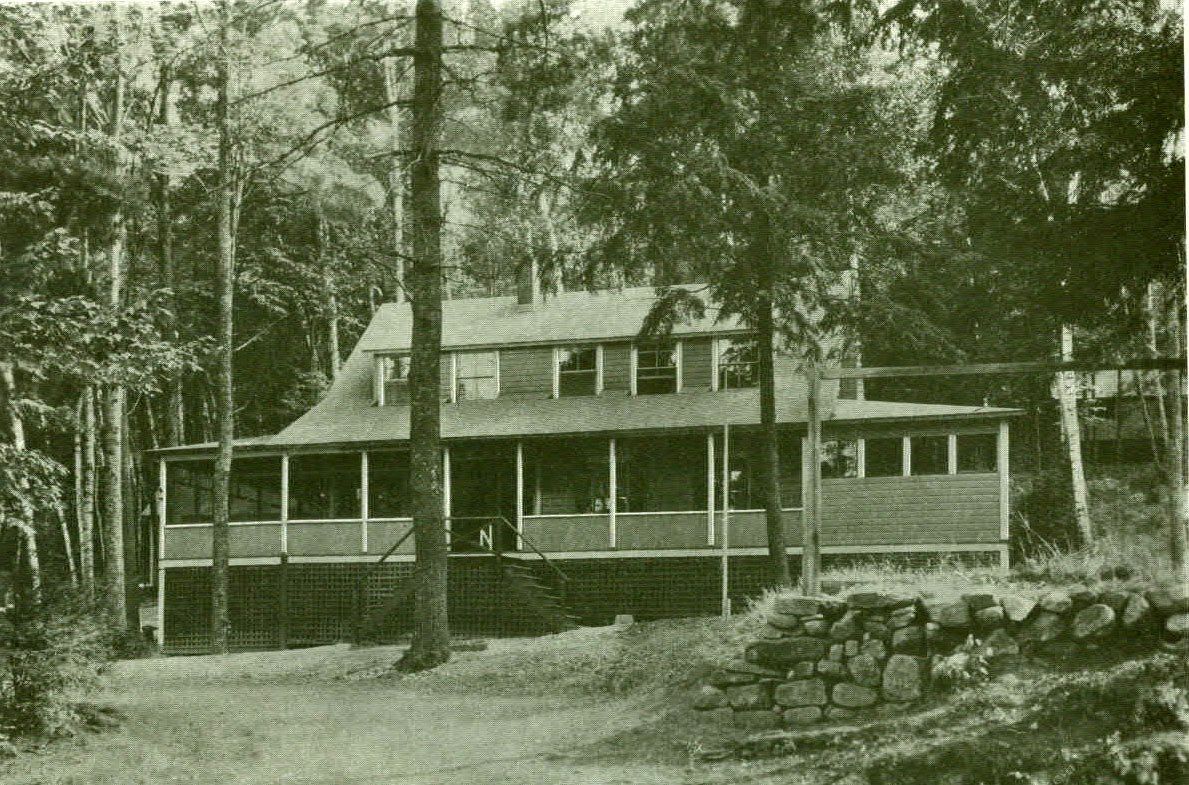Camp Nitawa
An Early Lake Spofford Girls' Camp

“Let the girls go camping. Let them go to the mountains and stretch their bodies and minds. Let them have a glimpse of what it means to get close to the earth and know the mother feel of it.
Let them get the smell of forest in their nostrils.”
Above is an excerpt from the 1931 promotional booklet for Camp Nitawa for girls on Lake Spofford. The camp occupied an area just west of the boat ramp. “A small, intimate camp”, it accommodated only 35 girls, ages 5 – 18 years of age with a ratio of one counselor for every 4-5 girls. The season lasted two months ($250), or a half season, one month ($135). Junior counselors, limited to 5, paid $150 for entire season. These prices were presented as quite reasonable compared to other camps that charged $300 - $400 for eight weeks. (Converted to 2022 dollars a season would cost $4,247.25)

Camp Nitawa offered all the usual camp activities, but especially stressed dancing and dramatics. Every Friday evening a new performance was presented for invited guests, totaling eight per season. Water sports and swimming lessons were provided on their private beach described as shallow, not tricky, and safe for all. Boating and canoeing were offered under “strict safeguards” with multiple trips to nearby “Treasure Island”, plus one around the lake canoe trip per season. Field trips and “Gypsy Trips", were included. These adventures opened the way for nature study, Indian lore, and woodcraft. Horseback riding lessons were extra at $37.50 per season (twenty rides), or $20 for ten. Individual riding lessons were $2.25 each. These had to be paid for in advance. They took place on The Acres, a hill farm site owned by the camp. It was also a favorite place for picnics and field sports.
Camp activities started at 9AM with a short inspirational service and announcements. The rest of the morning was interspersed with various age-appropriate activities including swimming with an hour reserved for “self-expression” giving the counselors time get to know their charges. If necessary prearranged tutoring was offered at $1.50 per hour. An after-lunch rest hour was observed and then more activities. Evening brought boating, rehearsals, dancing, and indoor games. The camp had a playroom for the younger children and a library. It also encouraged special interests which included editing the weekly camp paper “The Owl”. (It was mailed out to its subscribers for $1 a season). “Inspiring Sundays” started with a “silent dip” in the lake, a nondenominational service in the outdoor chapel, and a later “silent swim”. Sunday evenings were devoted to classical music, Bible and poetry dramatizations.
The camp outfit was very specific making a “rather imposing list that sometimes shocks the parent equipping a child for her first season”. However, they were toted as all practical with most required at home or at away camp. It was recommended that the uniforms be purchased directly from McCarthy & Simon of NYC. In addition to the daily and Sunday’s white uniform, the list included such things as bedding, bath towels, different colors bathing suits by age, tennis racket and balls, along with a rhythm gown. These should be packed only in a steamer truck as there was an extra fee for cartage of a wardrobe truck. The steamer truck transfer fee was $1. Laundry service was provided which averaged $1.25 per week.
The camp’s director and owner was Helen Keyes Robinson of Nutley NJ. Nicknamed the Nitawa Owl, by 1931 she had directed the camp for twelve summers. She was educated in Child Psychology and had taught kindergarten, dramatics, and dancing, and was an experienced camp counselor. As a child she summered on Lake Spofford and thought it an ideal location for her dream camp. Her husband, Frederick C. Robinson is listed in 1931 as running Camp Indian Acres on Lake Spofford for 5 – 14-year-old brothers of Camp Nitawa girls. Enrollment was 40 with a staff of 8, fee $200 per season.
The camp became Old New England Village sometime in the mid 1930s. Now, it is the condominium village known as The Cottages at Spofford Lake.












